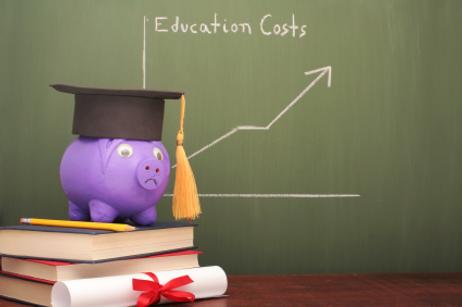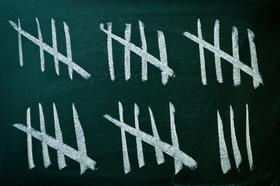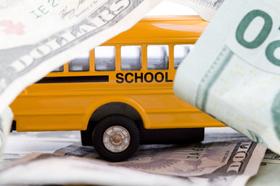Budget cuts have forced public schools to reduce their curriculum offerings, increase class sizes, and cut back on teacher positions. However, to fill the fiscal gap, many schools are taking even more drastic measures to reduce their operating costs.
The costs of new textbooks, classroom materials, and even handouts can result in massive school expenses. Subsequently, many public schools are now requiring students to purchase their own materials and books! As a result, many families may be forced to increase their education spending to meet their child’s classroom needs.
This video offers an overview of public K-12 education in the United States.
Cutting Jobs, Classes...and Textbooks?
When schools are faced with budget costs, most districts begin by eliminating faculty positions; however, reducing the number of teachers and administrators can only go so far on the bottom line. If school leaders reduce their faculty numbers, but still have not met their budgetary restrictions, then leaders are forced to develop new, and often controversial, alternatives.
For example, according to ABC News, schools across the state of California are hoping to reduce their spending by using older textbooks for longer periods of time. While California schools have already eliminated various educational programs, along with teaching and faculty positions, these cuts are simply not enough – and new textbooks are literally getting the ax.
In fact, school leaders report that the state of California will not be able to provide most of its public schools with new textbooks until at least 2014! Some schools in California, however, who do have textbook money saved, are still opting to use their older textbook editions in exchange for more teaching positions. For example, California’s 5th largest school district, Elk Grove, is investing its $3.5 million in textbook savings to hire and offer continuing employment to teachers.
While holding on to old textbooks may not seem like such a bad idea, critics are concerned that students in California public schools will lack exposure to some of the world’s most powerful changes, innovations, and signs of progress. Specifically, “Children are going to have to keep using their old textbooks, meaning some history books won't include Barack Obama as the first African-American President, or science books may not talk about global warming.”
This video looks at the overall state of budget cuts.
Public Schools: Not Necessarily “Free”
To help bridge the informational gap, some experts argue that teachers should implement greater online learning opportunities for their kids, as the internet can teach students about current information without the large costs of purchasing new books.
While the internet certainly seems to be a viable option, many California public school students lack at-home access to a computer and/or the internet. Adding to this, schools across the state cannot afford to provide each student (or even most students) with computer access on campus. As such, some families feel pressured to buy their own laptops or computers, along with at-home internet access, in order to provide the basics for their child's educational progress.
More Educational Costs Shifted onto Parents
In addition to purchasing at-home computers and internet access, many parents must bear printing costs as well! In an effort to reduce the funds used on copy machines, paper, and ink for handouts, some schools now require students to print their own handouts at home.
With the assistance of the internet, students are now often encouraged to download assignments at home, print them or finish them online, and then submit either a hard copy or an electronic version of the assignment.
Expanding on this trend, as the reveals, many schools are also enforcing copy and printing restrictions for both teachers and students. Paper Cut Knowledge Base, which provides an IT network specifically designed to reduce paper costs in public schools, has created various programs to allow school leaders to monitor and track weekly, monthly, or annual printing quotas for each student and teacher. If a teacher or student exceeds his or her limit, then the teacher or student can purchase extra copies with their own money.
From teaching positions to even printing ink, clearly, budget cuts are impacting public schools on every level. This school year, many parents will need to create household budgets that take into consideration at-home computers, internet access, and printing supplies. Hopefully, the list of shifting financial burdens from schools to parents will not grow much longer.
Questions? Contact us on Facebook. @publicschoolreview














